Archive
null
KubaParis
Als ich sie entlang des Flusses suchte, stand sie mitten im Wasser (When I sought her along the river, she stood in the middle of the water)
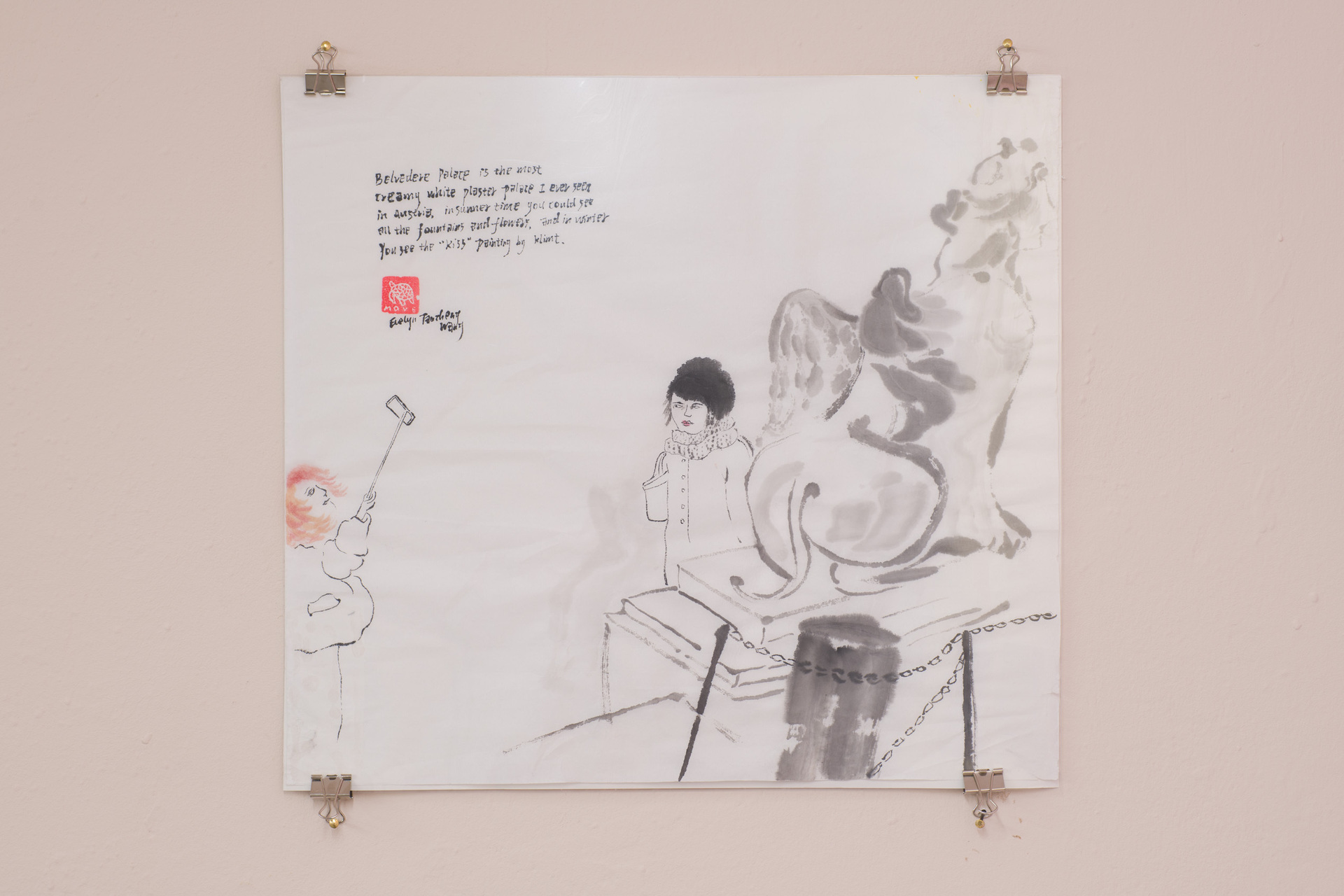
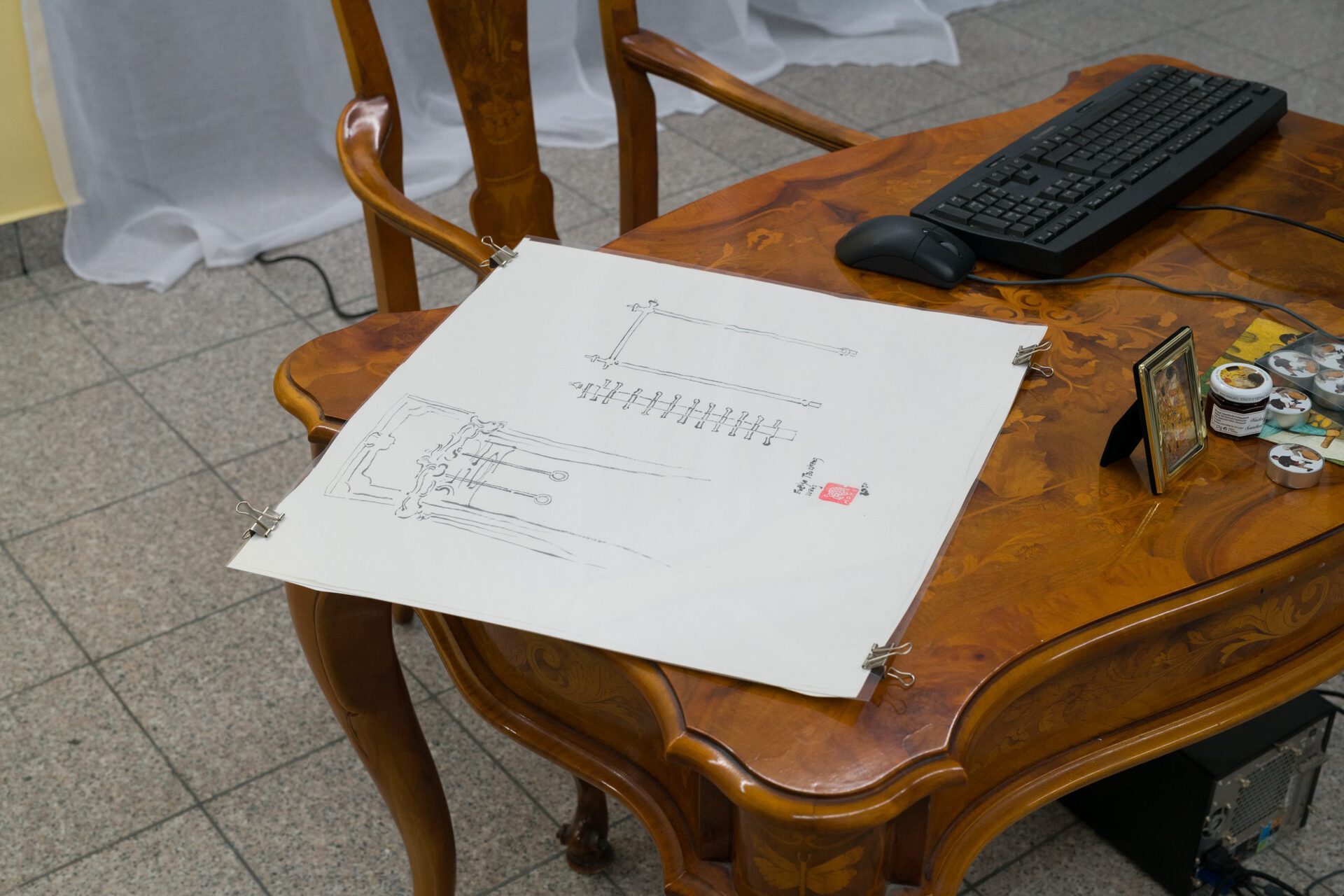


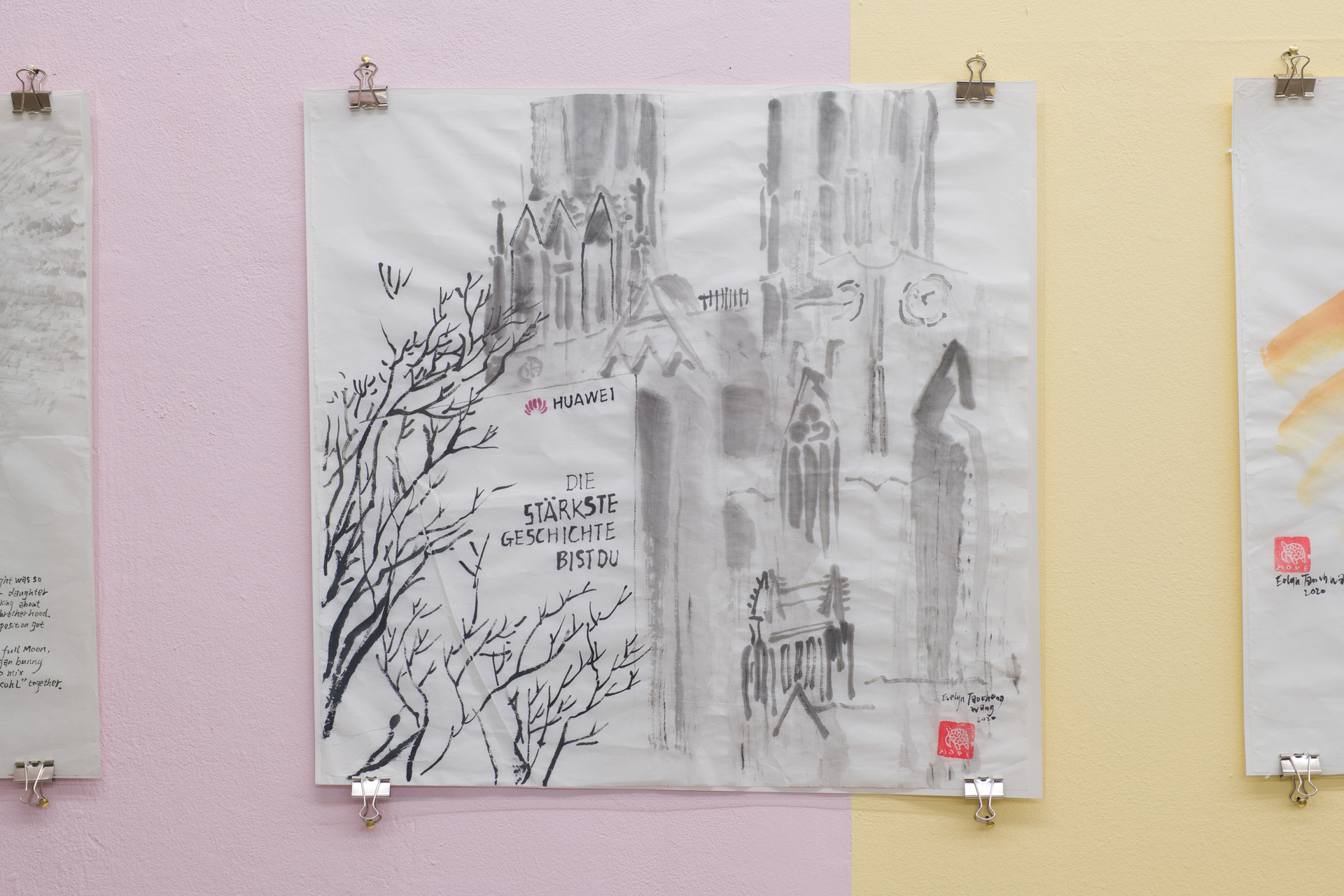
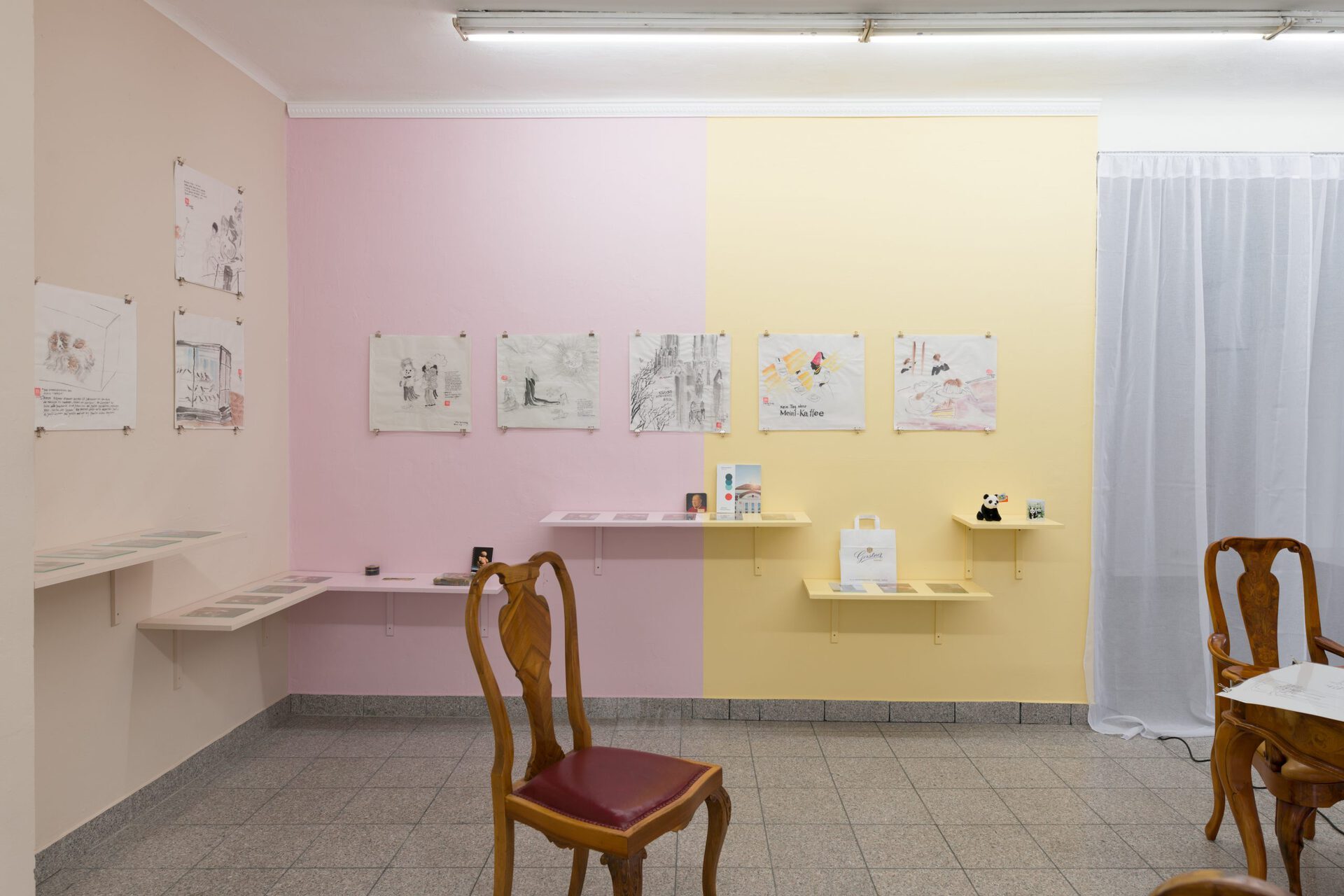

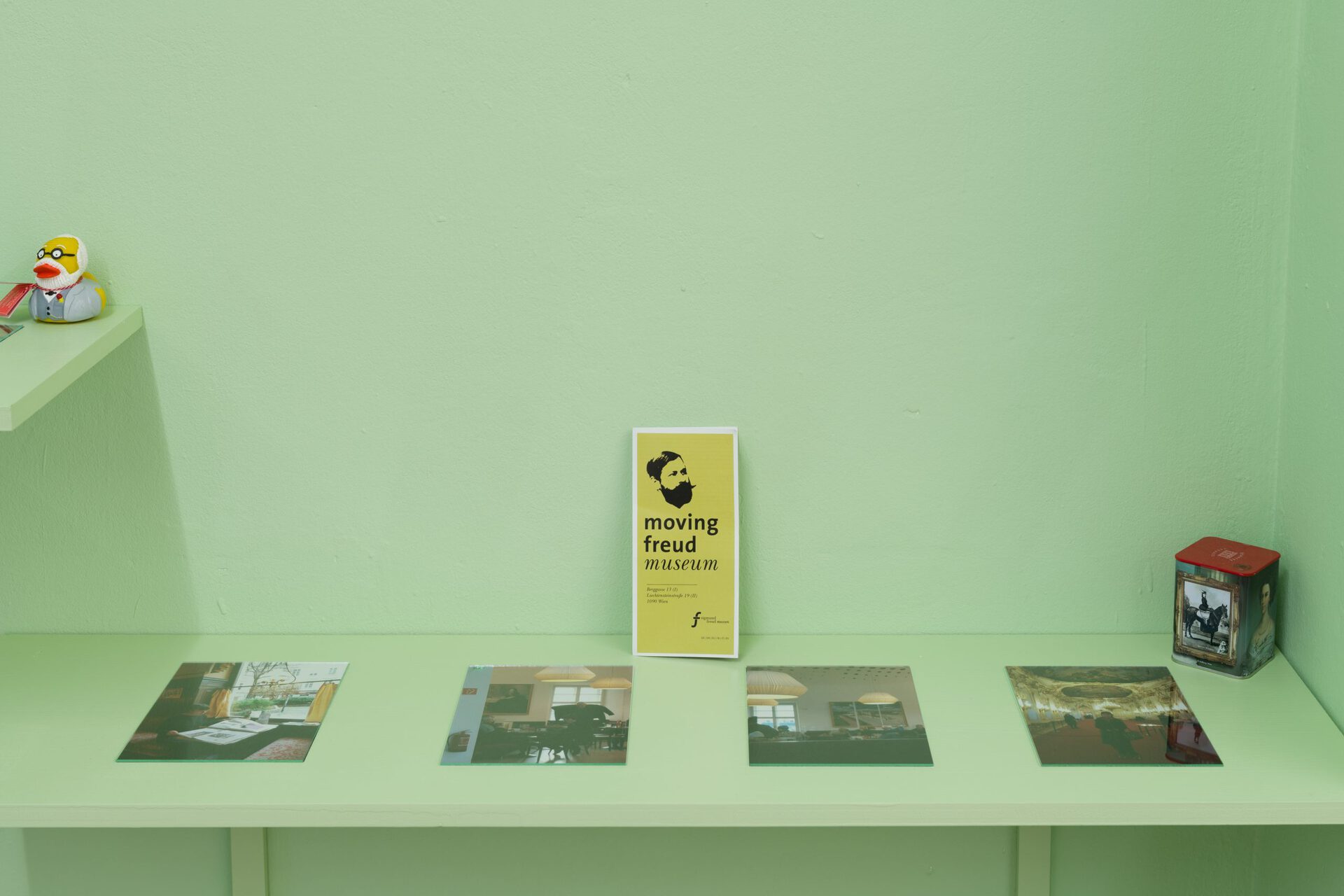
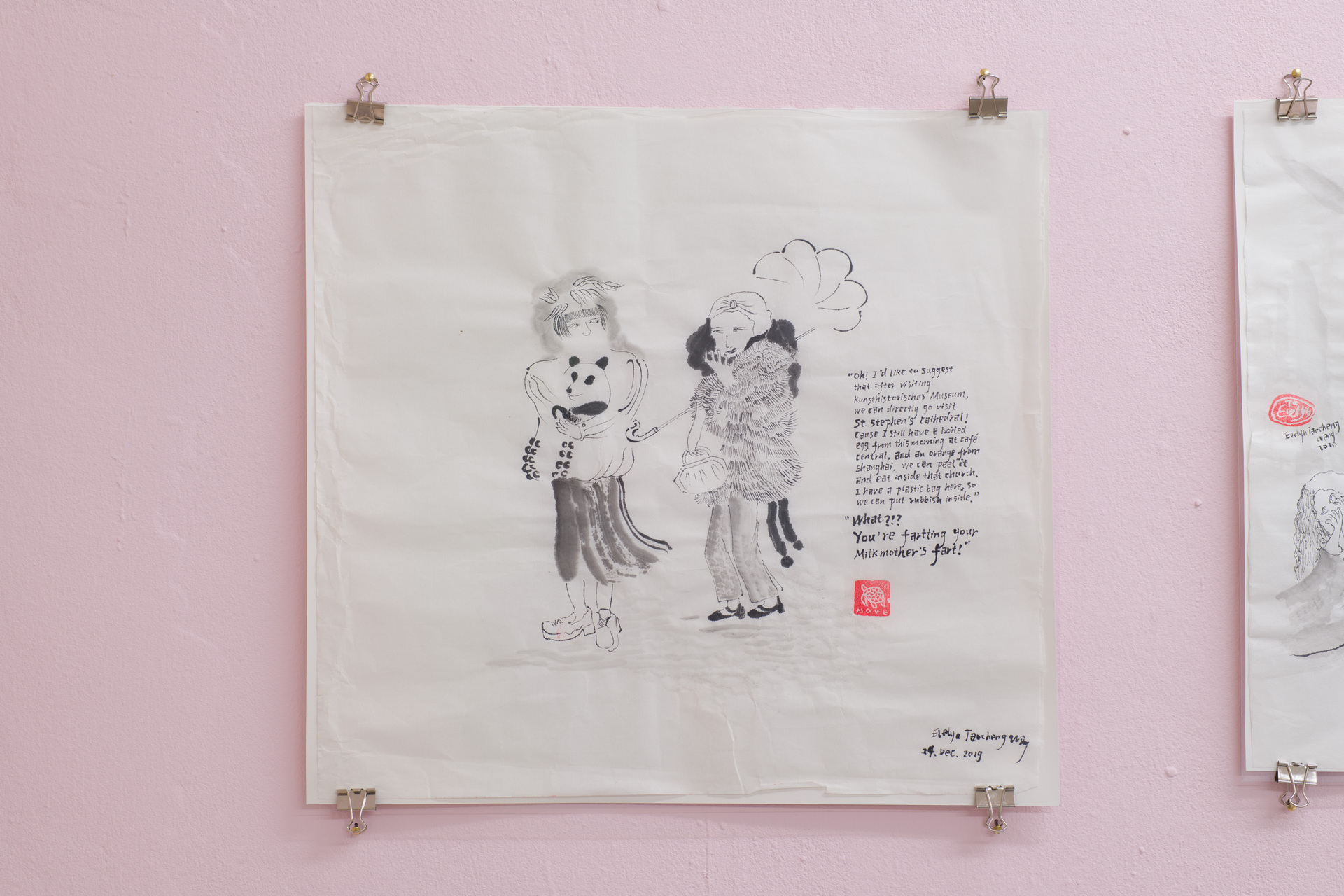
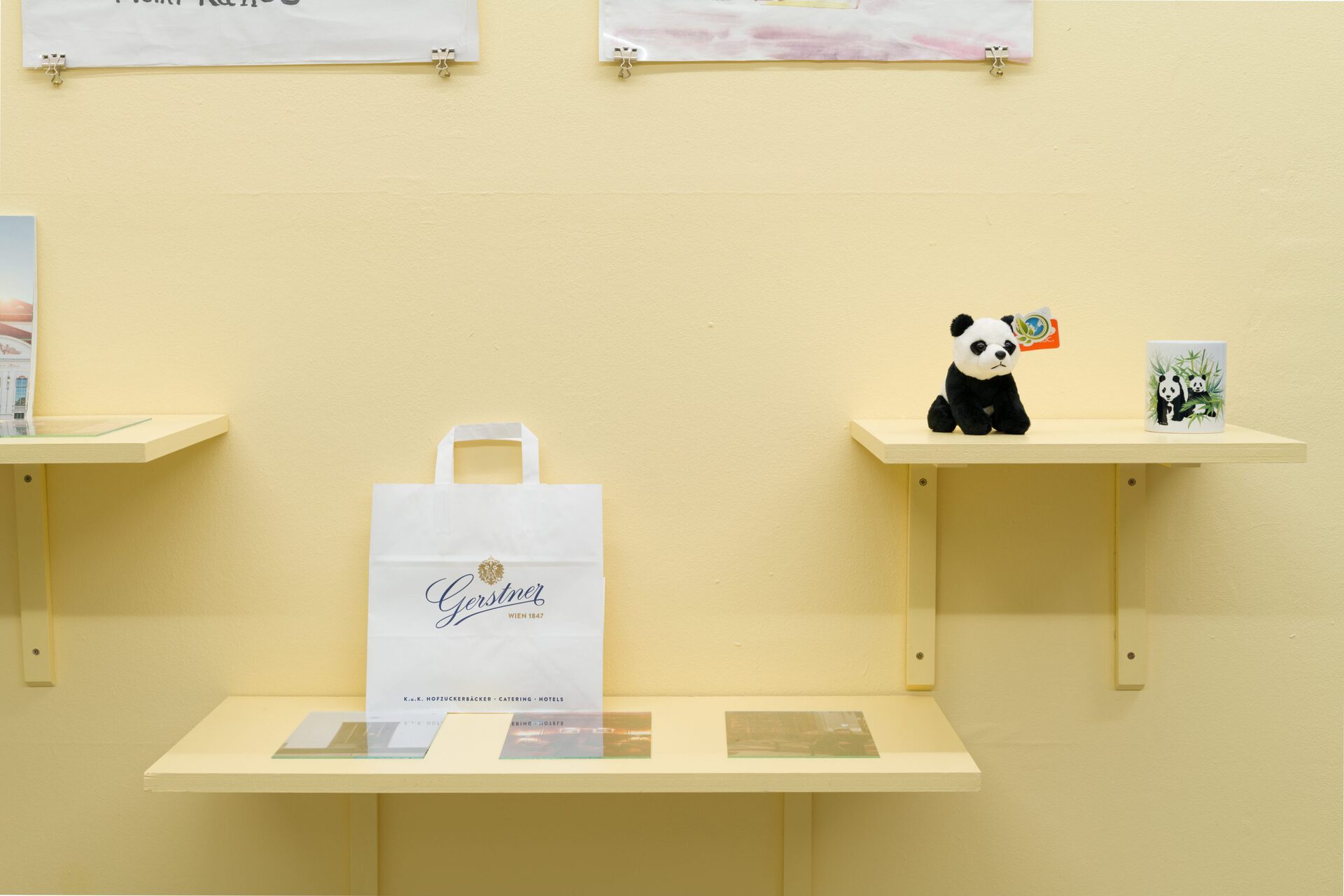
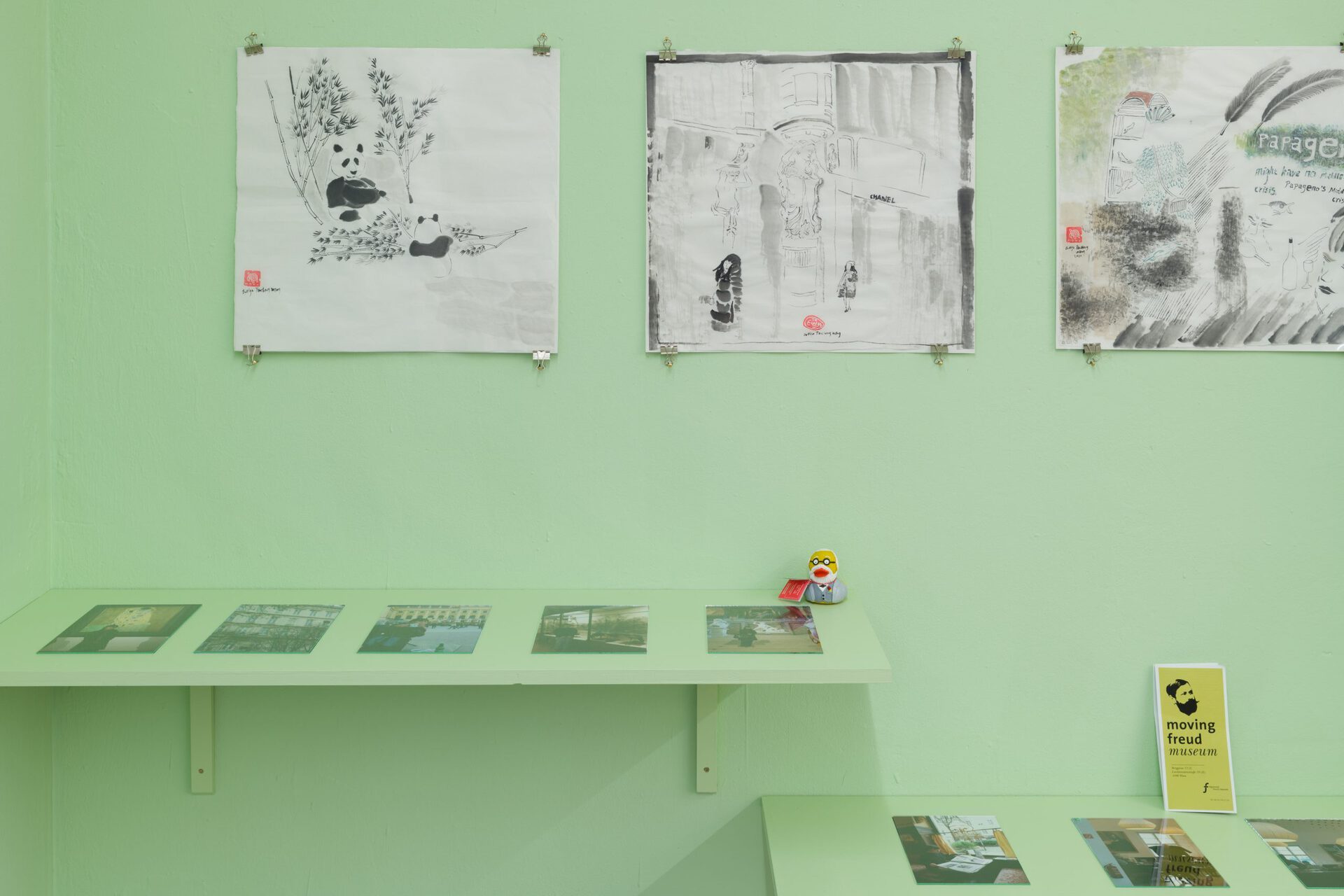
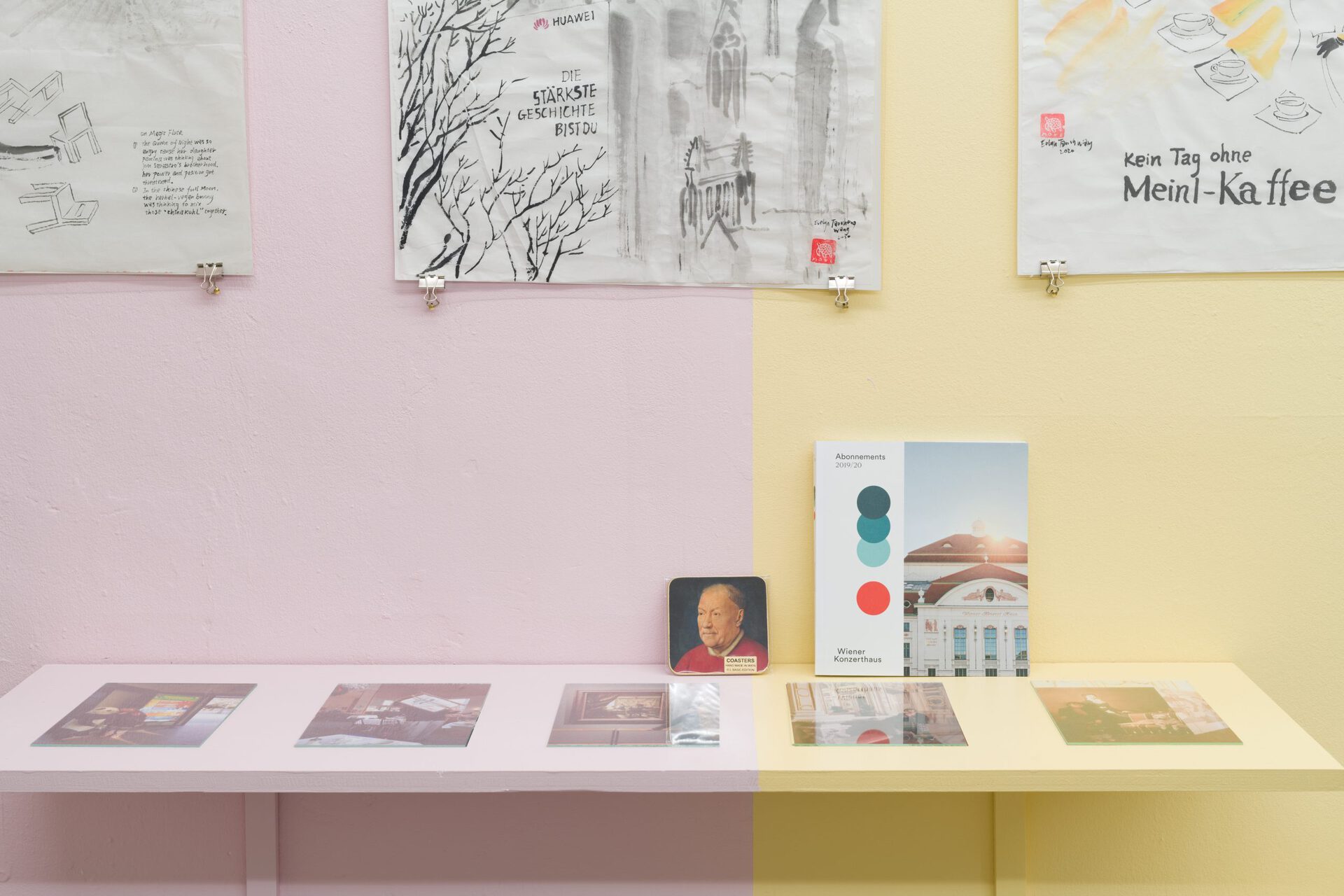

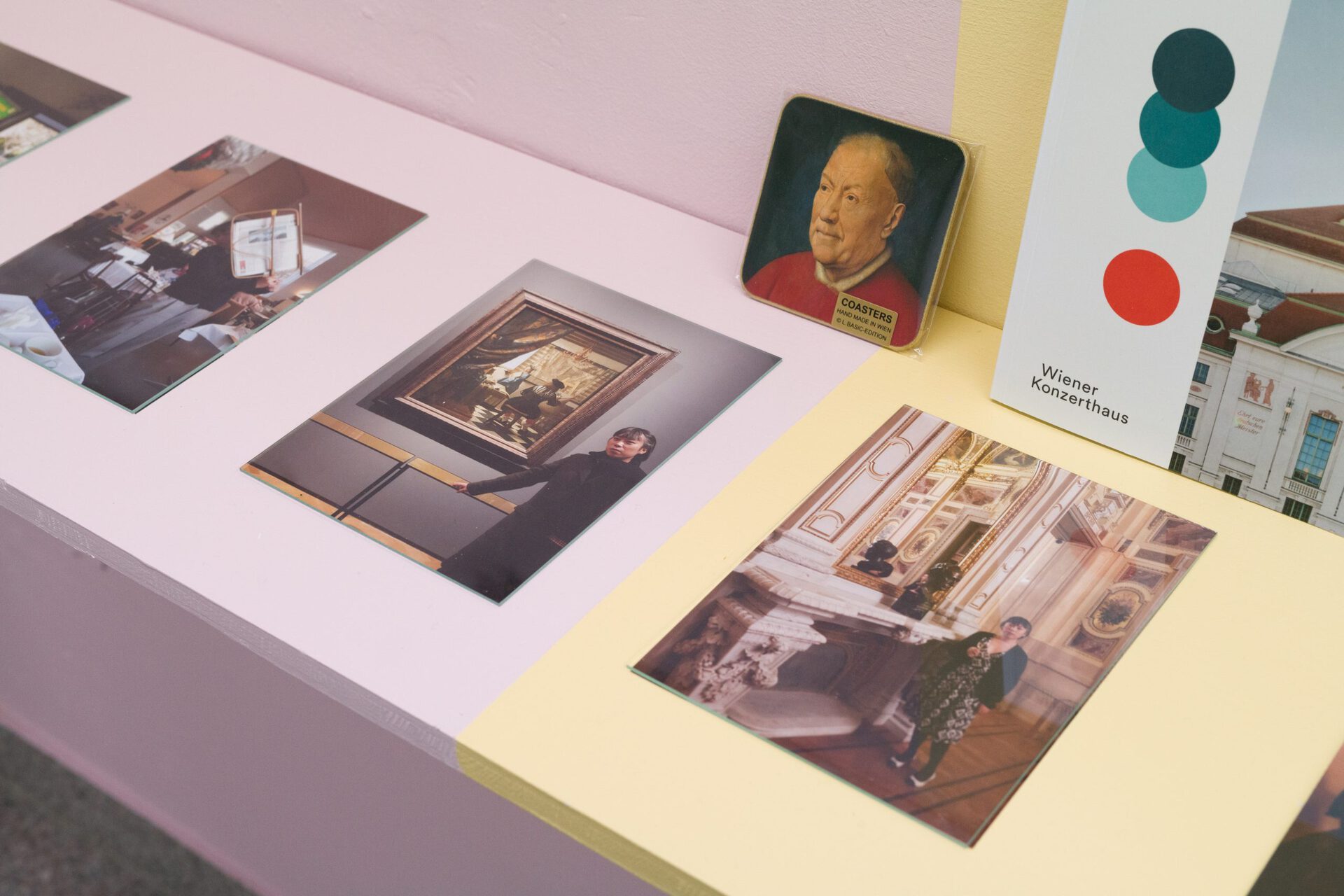
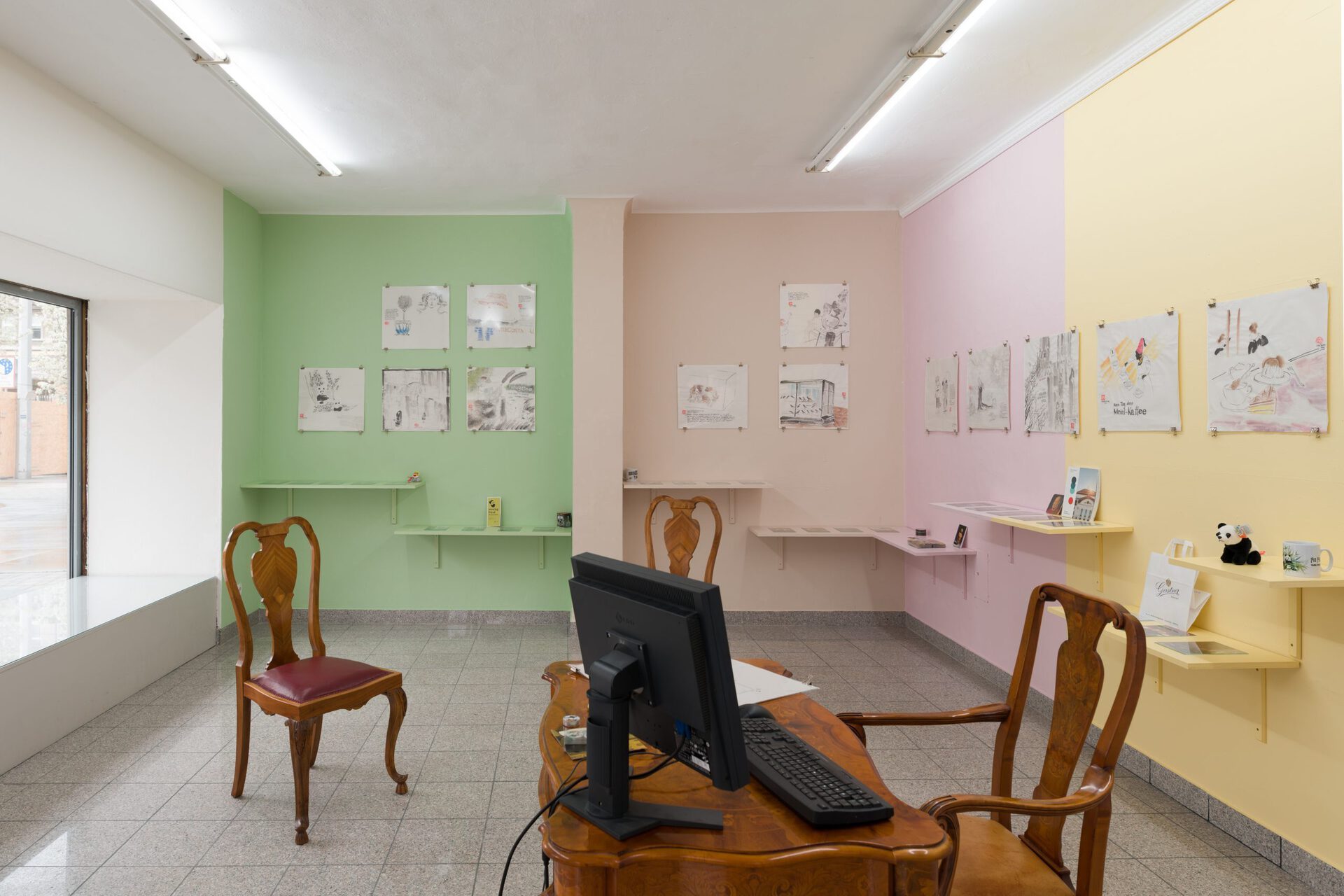
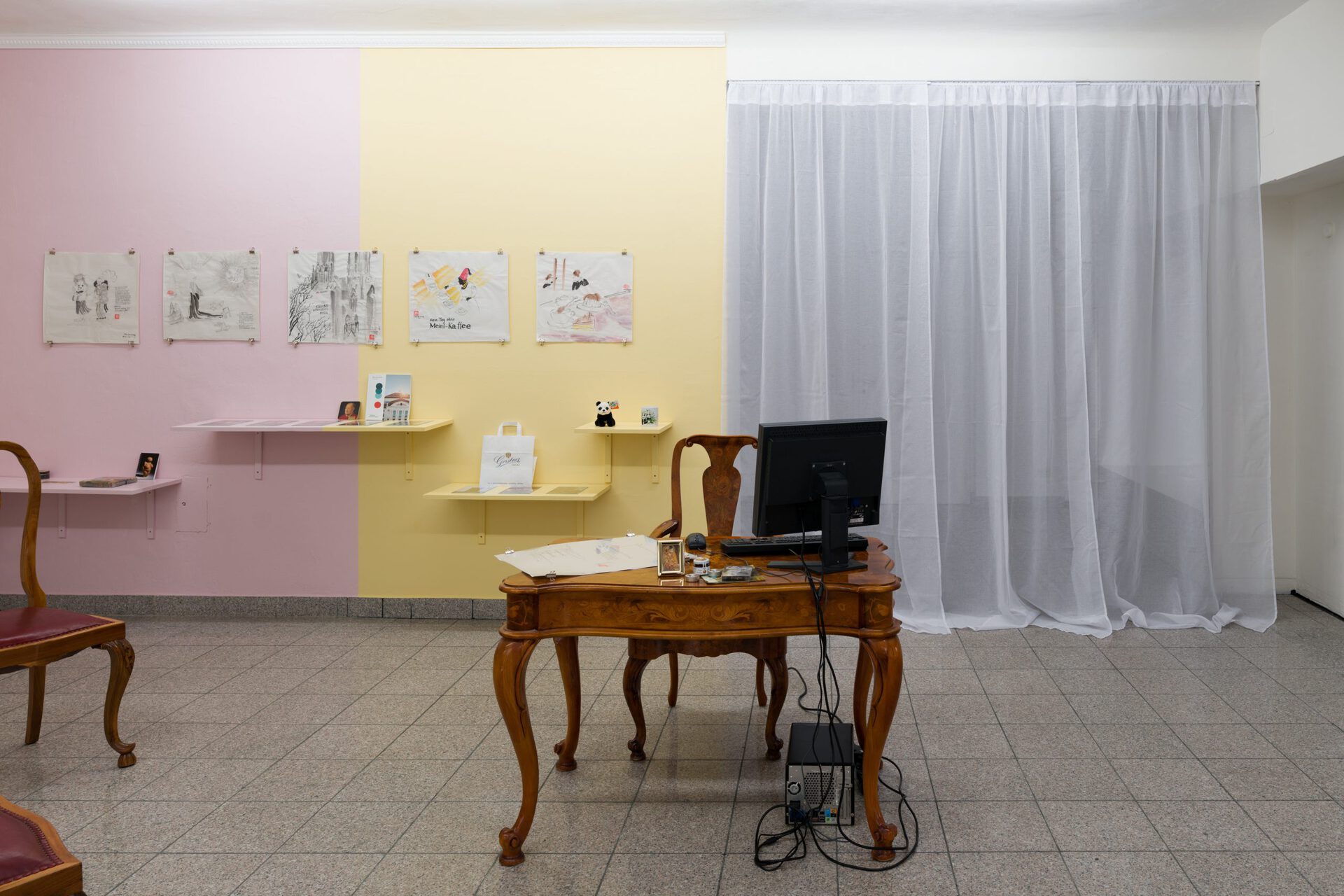


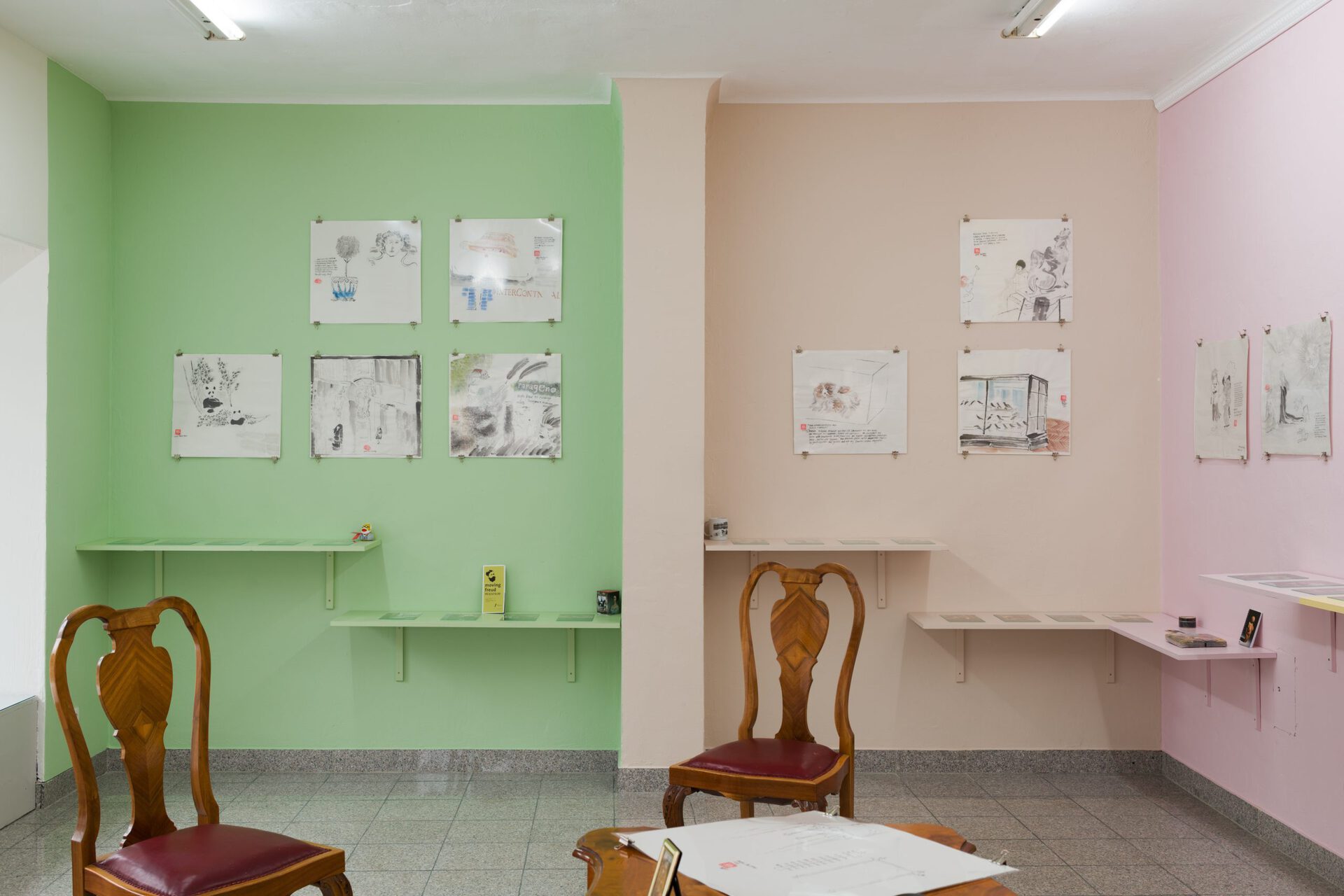
Location
Kevin SpaceSubheadline
Evelyn Taocheng Wang at Kevin Space, ViennaText
In the exhibition „Als ich sie entlang des Flusses suchte, stand sie mitten im Wasser (When I sought her along the river, she stood in the middle of the water)“ at Kevin Space in Vienna, Evelyn Taocheng Wang addresses the material manifestations and amplifications of culture.
An imperial looking desk and two Biedermeier chairs are being opposed by a 2000s PC and multi-colored pastel walls. Entering this bizarre office-like scene, a sculptural intervention in the middle of the space – which also functioned as a set-up for the performance during the opening of the show –grabs the viewer’s attention. As if their purpose was to distract from the witty rest of the exhibition, the performance left-overs seem to quote the presence of a protagonist, some absent fictive character, or even of an alter-ego.
The objects convey the impression of an odd travel agency, proposing, unravelling and outlining a slight reference to once accomplished labor, the labor of a person that, in times of online booking services, could no longer be afforded – awakening memories of the once established, for now, abolished, careless freedom of movement.
Similarly attractive as the interior and cotton candy walls are little display shelves sticking out of the latter. Looking at the souvenirs they carry, and considering what they are referring to, we start to learn that the tale of a city’s glory and reputation (in this case Vienna) and its rise or claim to international fame is being told and simultaneously questioned here. Various protagonists of the capital's rich cultural life, past and contemporary, are present: for example, Sigmund Freud, Julius Meinl, or even Schönbrunn’s pandas. It is the combination of these ready-mades that helps to examine how we constitute an image, an idea of culture beyond an imperial past and decadence, beyond tourist attractions, and cultural institutions. These objects tell real stories as well as completely fictional tales which in the end find their way into our homes and everyday lives. They are a tool to reproduce experiences and evoke old memories, just like the pastel walls could easily make me remember an ice-cream saloon from my childhood when I first entered the exhibition.
While Taocheng Wang’s work has always been oriented towards questions about mechanisms regarding the constitution of identity and its conformation, it is not solely an investigation of the politics surrounding such itself but an offer to pose a closer and investigative look at materials that further multiply, carry and embody notions of identity.
Almost empty paintings are placed behind plastic panes, pinned to the wall, where they rest very tender in front of white sheets. While the rice paper paintings – they show scribbling yet elaborate collages of various motifs – do depict a wide range of scenarios, it seems like some elements are missing or were never meant to be filled in. Taocheng Wang made sure to also bring text and other written bits into the picture. Thus, it appears that the paintings are most likely to be read as some kind of excerpt from a diary or sketchbook. In a showroom displaying observations and memories, she blends brandings, logos, and other characteristics of advertisement – for example including a huge poster of the Chinese enterprise Huawei flaunting on top the historic Viennese ‘Votivskirche’.
Further emphasizing this diary-like structure of the exhibition, the paintings are complemented by ready-made souvenirs and glass-coated photos that show the artist at various touristic sites all over the city of Vienna.
A thoroughly critical gesture commenting prejudice and clichés, in this series of self-portraits the artist amusingly yet confidently poses in or next to top-notch tourist attractions. The photos neatly surround almost half of the room and help to guide the visitor through its different stations.
Continuing to utilize her biography as well as personal experiences, Taocheng Wang eloquently balances two types of identity: personal and social. If we understand social identity as something that is part of an individual's self-concept that came from the knowledge of one's membership in a social group, together with emotional significance attached to it,(1) the presented physical works seem to negotiate exactly that. The pieces at KevinSpace look into a shift of meaning and purpose when entities or certain variables linked to ‘certain cultures’ are being adapted, relocated or even appropriated.
Bringing back the title of the exhibition „Als ich sie entlang des Flusses suchte, stand sie mitten im Wasser (When I sought her along the river, she stood in the middle of the water)“, it is not as easily dismantled as the images attached to it. The quote taken out of a poem, again, goes along with showing the scope between outlines and center, emphasizing even more on an iterating journey of finding one’s self again and again during life and its alterations.
The exhibition, with its careful observations, can therefore serve as a lucid documentation of long-past actions as well as a hint into the future. Escaping clear categorization of how her work is to be read, Taocheng Wang elegantly manages to blur the traces of what seems to be broken down and direct at first sight.
- Duszak, Anna. 2002. Us and others: an introduction. In: A. Duszak (ed.), Us and Others. Social identities across languages, discourses and cultures. Amsterdam: Benjamins, pp. 1-28